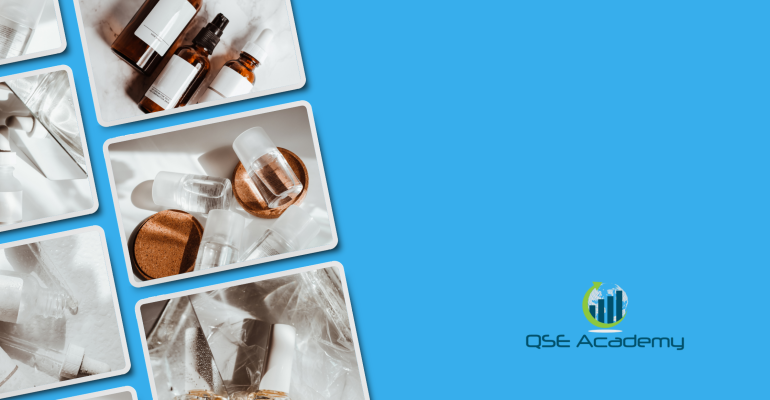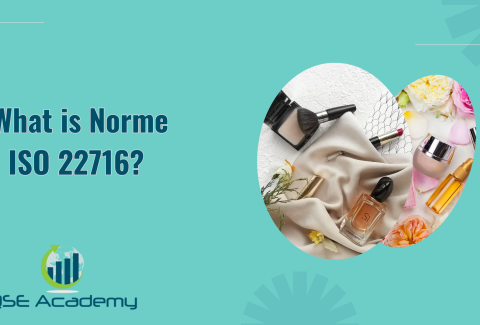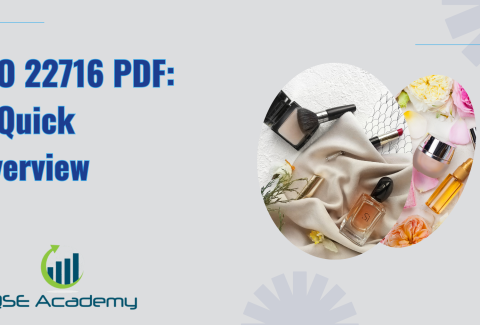ISO 22716:2007 Overview
ISO 22716:2007 Overview
Have you ever wondered how your favorite cosmetics are made safe and consistent every single time? From the silky smooth lotions to vibrant lipsticks, there’s a lot that happens behind the scenes to ensure these products meet quality and safety standards. That’s where ISO 22716:2007 comes in—a globally recognized standard that focuses on Good Manufacturing Practices (GMP) for the cosmetics industry.
In simple terms, ISO 22716:2007 is like the ultimate guidebook for manufacturers to produce safe, high-quality products. It provides clear, practical guidelines on everything from hygiene and cleanliness to documentation and quality control. Whether you’re a cosmetic brand owner or just curious about how things work behind the curtain, understanding ISO 22716:2007 gives you a deeper appreciation of the effort that goes into creating products you can trust.
In this article, we’ll explore what ISO 22716:2007 is, why it matters, and how it benefits both businesses and consumers. So, if you’re ready to learn how this standard helps make the beauty industry safer and more efficient, let’s dive right in!
What is ISO 22716:2007?
Alright, let’s start with the basics—what exactly is ISO 22716:2007, and why is it so important in the cosmetics industry? Think of it as a comprehensive set of guidelines designed to help cosmetic manufacturers ensure their products are safe, consistent, and high-quality. It’s not just about making products that look good—it’s about making them in a way that protects both consumers and businesses.
Defining ISO 22716:2007
At its core, ISO 22716:2007 focuses on Good Manufacturing Practices (GMP). GMP is all about having structured processes in place to manage every step of production, from sourcing raw materials to packaging the final product. The goal? To minimize risks like contamination, errors, or inconsistencies and ensure the products meet strict safety and quality standards.
But what makes ISO 22716:2007 stand out is how practical it is. It’s not a vague list of “do’s and don’ts.” Instead, it provides detailed, actionable advice for manufacturers to create a clean, controlled, and efficient production environment. Whether you’re a small indie brand or a global corporation, these guidelines can be tailored to fit your operations.
The History of ISO 22716:2007
You might be wondering, where did ISO 22716:2007 come from? The standard was first published in 2007 by the International Organization for Standardization (ISO) in response to the growing demand for a unified approach to cosmetics manufacturing. Before this, different countries had their own rules, which made things complicated for businesses operating internationally.
ISO created ISO 22716:2007 to bridge the gap, providing a single, globally recognized standard for Good Manufacturing Practices. Today, it’s widely accepted across the cosmetics industry and plays a crucial role in meeting regulatory requirements in markets like the European Union, the United States, and Asia.
Why ISO 22716:2007 Matters
So, why should businesses care about ISO 22716:2007? For starters, it helps manufacturers maintain consistency in their products, ensuring that every batch meets the same high standards. Imagine buying your favorite skincare product and finding it’s completely different from the last bottle—that’s what these guidelines help prevent!
More importantly, ISO 22716:2007 is all about consumer safety. Cosmetics are applied directly to the skin, hair, and face, so ensuring they’re free from contamination or harmful substances is non-negotiable. By following the standard, companies demonstrate their commitment to protecting their customers and building trust in their brand.
By understanding what ISO 22716:2007 is and where it came from, you’re already one step closer to seeing why it’s such a vital tool for the cosmetics industry. Whether you’re a business looking to improve your processes or just a curious beauty enthusiast, this standard lays the foundation for safer, more reliable products we all benefit from. How cool is that?
Key Components of ISO 22716:2007
Now that we know what ISO 22716:2007 is all about, let’s dive into the key components that make this standard so effective. Think of it as a roadmap that guides cosmetic manufacturers through every step of the production process to ensure safety, quality, and consistency. Here’s a closer look at the main elements.
1. Manufacturing Process Guidelines
One of the central focuses of ISO 22716:2007 is the manufacturing process itself. These guidelines ensure that every step—from mixing raw materials to packaging the final product—is carried out in a controlled and consistent way.
For instance, the standard emphasizes the importance of clear instructions and standardized procedures. This means that every employee knows exactly what to do and how to do it, reducing the risk of errors or inconsistencies. Whether you’re creating a moisturizing cream or a vibrant lipstick, ISO 22716:2007 ensures that the process is smooth, efficient, and error-free.
2. Hygiene and Cleanliness Standards
Let’s face it: hygiene is non-negotiable when it comes to cosmetics. ISO 22716:2007 places a big emphasis on maintaining a clean and sanitary environment throughout the production process.
This includes everything from the cleanliness of the facility and equipment to the personal hygiene of employees. For example, workers are required to wear protective clothing, such as gloves and hairnets, to prevent contamination. Equipment must also be cleaned and sanitized regularly to ensure that no impurities make their way into the products.
3. Quality Control Measures
Quality control is another cornerstone of ISO 22716:2007. The standard outlines procedures for testing and verifying products at various stages of production to ensure they meet the desired specifications.
For instance, raw materials are tested upon arrival to confirm they’re safe and suitable for use. Similarly, finished products are inspected for consistency, packaging integrity, and compliance with regulatory requirements. By following these steps, businesses can ensure that every product that reaches the shelves is safe and high-quality.
4. Documentation and Record-Keeping
Here’s a detail you might not think about at first: keeping good records. ISO 22716:2007 highlights the importance of documenting every stage of the production process.
Why is this important? Because detailed records allow manufacturers to trace every step in case an issue arises. If there’s a problem with a batch, these records make it easier to identify what went wrong and fix it quickly. It also ensures transparency and accountability, which are key to maintaining customer trust.
5. Employee Training
Even the best guidelines won’t mean much without a well-trained team to implement them. ISO 22716:2007 stresses the importance of training employees so they understand their roles in maintaining safety and quality.
From understanding hygiene practices to following proper manufacturing procedures, every team member has a part to play. Regular training sessions ensure that everyone stays up-to-date on the latest practices and requirements.
6. Storage and Distribution
The work doesn’t end once the product is made. ISO 22716:2007 also provides guidance on how to store and distribute cosmetics to maintain their quality. This includes storing products in controlled environments to prevent damage and ensuring that transportation conditions don’t compromise their safety or effectiveness.
By breaking down these components, it’s clear that ISO 22716:2007 is more than just a set of rules—it’s a comprehensive framework that covers every aspect of cosmetics manufacturing. Whether you’re running a small operation or a large-scale business, following these guidelines helps you create products that are safe, consistent, and trustworthy. Isn’t it amazing how much thought goes into making the products we use every day?
Benefits of Implementing ISO 22716:2007
So, why should your business take the time and effort to implement ISO 22716:2007? The benefits go way beyond just ticking a compliance box. This standard is like a backstage pass to better operations, happier customers, and a stronger brand reputation. Let’s break it down together and see how ISO 22716:2007 can transform your business.
1. Ensuring Product Safety and Quality
When it comes to cosmetics, safety and quality are everything. You want your customers to trust that your products are safe to use and deliver the results they promise. By following ISO 22716:2007, you’re putting systems in place to ensure that every product meets the highest safety standards.
For instance, the standard emphasizes consistent processes, thorough quality checks, and hygienic production environments. This means you can confidently tell your customers, “We’ve done everything to ensure this product is safe and high-quality.”
2. Building Customer Trust
Let’s be honest—trust is hard to earn but easy to lose. When customers know your products are manufactured in line with ISO 22716:2007, it gives them extra confidence in your brand.
Why? Because ISO 22716:2007 is internationally recognized, so customers understand that you’ve gone the extra mile to meet global standards. It’s a great way to stand out from competitors who might not take the same level of care. In a world where people are increasingly conscious about the products they use, this kind of credibility is priceless.
3. Simplifying Regulatory Compliance
Navigating the world of cosmetic regulations can feel like a maze, especially if you’re trying to enter international markets. The good news? ISO 22716:2007 simplifies this process.
Because the standard is globally recognized, many regulatory bodies already accept it as a benchmark for compliance. Whether you’re selling in Europe, the U.S., or Asia, aligning with ISO 22716:2007 ensures that your products meet the necessary requirements, saving you time and avoiding potential headaches.
4. Expanding Into Global Markets
If you’re dreaming of taking your brand global, ISO 22716:2007 is your golden ticket. Since it’s an internationally recognized standard, it opens doors to new markets where compliance with Good Manufacturing Practices (GMP) is a must.
For example, the European Union’s cosmetics regulations specifically reference ISO 22716:2007 as a key compliance requirement. By adopting this standard, you’re making it easier to navigate entry into these markets and ensure your products meet their expectations.
5. Improving Operational Efficiency
Here’s a surprising benefit: implementing ISO 22716:2007 can actually make your operations more efficient. How? By introducing clear processes, reducing errors, and improving communication across your team.
For instance, having structured workflows and detailed documentation means fewer mistakes and less time spent troubleshooting. It’s not just about meeting standards—it’s about making your business run smoother and more effectively.
6. Protecting Your Brand Reputation
In the cosmetics industry, your reputation is everything. A single product recall or safety issue can damage trust and cost you customers. By adhering to ISO 22716:2007, you’re proactively reducing the risk of these issues.
The standard helps you identify and address potential problems before they escalate, giving you peace of mind that your products are safe and your brand is protected.
By implementing ISO 22716:2007, you’re not just improving your processes—you’re setting your business up for long-term success. From boosting customer trust to simplifying compliance and expanding into new markets, the benefits are clear. Plus, isn’t it great to know that you’re creating products that people can rely on? That’s something to be proud of!
How to Implement ISO 22716:2007 in Your Business
Now that we’ve covered what ISO 22716:2007 is and why it’s so valuable, let’s talk about how to actually implement it in your business. If the idea feels a little overwhelming, don’t worry—you’re not alone! Think of this as a step-by-step guide to help you align your operations with the standard. By the end, you’ll see that implementing ISO 22716:2007 is not just doable, but also a smart move for your business.
1. Familiarize Yourself with the Guidelines
The first step is to really get to know the ISO 22716:2007 standard. Start by obtaining the official document from the International Organization for Standardization (ISO) or an authorized distributor. It’s packed with all the details you’ll need, covering everything from hygiene to record-keeping.
Take some time to go through the document and highlight the sections that apply most directly to your business. While it might feel technical at first, think of it as a recipe for success—each step is designed to help you produce safe and high-quality cosmetics.
2. Conduct a Gap Analysis
Before making changes, it’s essential to understand where your business currently stands. A gap analysis compares your existing processes with the requirements of ISO 22716:2007.
Start by asking questions like:
- Are your hygiene practices up to standard?
- Do you have clear documentation for every stage of production?
- Are your employees properly trained in Good Manufacturing Practices (GMP)?
Identifying gaps will give you a clear picture of what needs to be improved.
3. Create an Action Plan
Once you’ve identified the areas that need work, it’s time to create an action plan. This plan should outline the steps you’ll take to meet the requirements of ISO 22716:2007.
For example:
- If your hygiene practices need improvement, you might invest in new cleaning equipment or update your protocols.
- If documentation is lacking, consider implementing a system to track raw materials, production stages, and final products.
Break the plan into manageable tasks and set realistic deadlines to keep things on track.
4. Train Your Team
Your employees play a crucial role in successfully implementing ISO 22716:2007. After all, they’re the ones handling the products and following the procedures on a daily basis.
Make sure everyone understands the importance of the standard and their specific responsibilities. For instance, staff should be trained on proper hygiene practices, how to handle raw materials, and the importance of keeping detailed records. Regular training sessions will help ensure your team stays informed and aligned with the requirements.
5. Update Processes and Procedures
With your plan in place and your team on board, it’s time to start making changes. This might involve updating workflows, introducing new equipment, or revising your quality control procedures to meet ISO 22716:2007 guidelines.
For example, you might create designated areas for raw material storage to prevent contamination or implement batch tracking to improve traceability. Remember, the goal is to create a system that’s not only compliant but also efficient and easy to follow.
6. Monitor and Audit Your Practices
Once you’ve implemented the changes, it’s important to regularly monitor your processes to ensure ongoing compliance with ISO 22716:2007.
Schedule internal audits to check that everything is running smoothly and address any issues that arise. These audits are also a great opportunity to identify areas for further improvement. Think of it as a way to keep your operations sharp and up-to-date.
7. Consider Certification
While certification isn’t mandatory, it can be a great way to show customers and partners that you’re serious about quality and safety. Certification involves an external audit by an accredited body, which verifies that your business meets all the requirements of ISO 22716:2007.
Having that official stamp of approval can boost your brand’s credibility and make it easier to enter international markets.
By following these steps, implementing ISO 22716:2007 becomes a clear and achievable goal. It’s not about transforming your business overnight—it’s about taking thoughtful, gradual steps toward better safety, quality, and efficiency. And trust me, the effort is worth it when you see the positive impact on your products, your customers, and your brand!
ISO 22716:2007 in the Global Context
Let’s zoom out for a moment and talk about the bigger picture. ISO 22716:2007 isn’t just a set of guidelines for individual businesses—it’s a standard that plays a major role in the global cosmetics industry. Whether you’re a local brand or aiming to sell internationally, understanding how ISO 22716:2007 fits into the global context can help you see why it’s so valuable.
1. A Globally Recognized Standard
One of the most powerful things about ISO 22716:2007 is its global reach. This standard isn’t just used in one country or region—it’s recognized and respected worldwide.
For manufacturers, this means that following ISO 22716:2007 helps you align with the expectations of regulatory bodies in major markets like the European Union, the United States, and Asia. It creates a level playing field, ensuring that no matter where your products are made or sold, they meet the same high standards for safety and quality.
2. Supporting International Trade
If you’re dreaming of expanding your business beyond your local market, ISO 22716:2007 can be a game-changer. Many countries require cosmetic products to comply with specific regulations, and in many cases, ISO 22716:2007 is part of those requirements.
For example, the European Union’s cosmetics regulation explicitly references ISO 22716:2007 as the standard for Good Manufacturing Practices (GMP). By following it, you’re not only ensuring compliance but also making your products more attractive to distributors and retailers in these regions. It’s like having a passport that makes crossing borders easier for your brand.
3. Building Global Consumer Trust
Consumers today are more informed than ever. They want to know that the products they’re using are safe, ethical, and made to high standards. When your business follows ISO 22716:2007, you’re sending a clear message: “We care about quality and safety, no matter where in the world you are.”
This can be a significant selling point, especially for brands looking to stand out in a crowded market. By highlighting your compliance with ISO 22716:2007, you build credibility and trust with consumers who prioritize transparency and reliability.
4. Aligning with Regulatory Compliance
Different countries have different regulations for cosmetics, and keeping up with them all can be challenging. The beauty of ISO 22716:2007 is that it simplifies this process. Because it’s globally recognized, aligning with this standard often means you’re already meeting the key requirements of many regulatory frameworks.
For example, the U.S. Food and Drug Administration (FDA) doesn’t mandate ISO 22716:2007, but following it demonstrates a strong commitment to GMP, which can help you navigate inspections and regulatory reviews more smoothly. Similarly, in Asia, markets like China and Japan often reference ISO 22716:2007 in their guidelines for cosmetics.
5. Encouraging Collaboration Across Borders
Another way ISO 22716:2007 supports the global cosmetics industry is by fostering collaboration. When everyone follows the same standard, it’s easier for manufacturers, suppliers, and distributors to work together seamlessly.
For instance, if you’re sourcing ingredients from another country or working with an overseas distributor, both parties can operate confidently knowing that ISO 22716:2007 creates a shared understanding of quality and safety requirements. It simplifies communication and reduces the risk of misunderstandings or mistakes.
6. Paving the Way for Future Innovation
By providing a solid foundation for Good Manufacturing Practices, ISO 22716:2007 also creates room for innovation. When companies have reliable, standardized processes in place, they can focus more on developing new products, exploring sustainable practices, or introducing cutting-edge formulations.
In a global industry where trends evolve quickly, having the stability offered by ISO 22716:2007 allows businesses to adapt and grow while maintaining high standards.
In a nutshell, ISO 22716:2007 is more than just a standard—it’s a bridge that connects the cosmetics industry on a global scale. Whether you’re focused on entering new markets, building trust with international consumers, or staying ahead of regulatory changes, this standard makes it all possible. It’s not just about compliance—it’s about thriving in a global industry with confidence and credibility. How exciting is that?
Common Challenges in Meeting ISO 22716:2007 Standards
Implementing ISO 22716:2007 is undoubtedly a smart move for any cosmetics business, but like any big step forward, it doesn’t come without its challenges. If you’ve ever felt overwhelmed by the idea of aligning with this standard, trust me, you’re not alone. The good news? These challenges aren’t impossible to overcome. Let’s look at some of the common hurdles businesses face when meeting ISO 22716:2007 requirements—and how you can tackle them.
1. Understanding the Technical Language
Let’s be honest—standards like ISO 22716:2007 can sometimes feel like they’re written in a different language. The technical terms and detailed guidelines can seem daunting at first, especially if you’re new to manufacturing standards.
How to Overcome It:
Break it down! Start by focusing on the key components that apply most directly to your business, like hygiene practices, documentation, or quality control. You don’t have to tackle everything at once. Consider bringing in a consultant or enrolling in a training program to help translate the standard into actionable steps.
2. Conducting a Gap Analysis
A gap analysis is an essential part of aligning with ISO 22716:2007, but figuring out where your business currently stands can feel like a big task. It requires you to examine every aspect of your operations and identify areas where improvements are needed.
How to Overcome It:
Take it one step at a time. Start with a checklist based on ISO 22716:2007 requirements and review your processes systematically. You can also hire a third-party auditor or consultant to help you pinpoint gaps and create a roadmap for addressing them.
3. Training Employees Effectively
Your team is key to successfully implementing ISO 22716:2007, but getting everyone on board can be tricky. Employees may resist changes, especially if they’re used to doing things a certain way.
How to Overcome It:
Communication is everything! Help your team understand why ISO 22716:2007 matters—not just for the business, but for product safety and customer trust. Offer hands-on training and create easy-to-follow guides that clearly explain new procedures. Regular refreshers can also help keep everyone on track.
4. Managing Documentation
One of the most critical—and sometimes tedious—parts of ISO 22716:2007 is maintaining thorough records. From tracking raw materials to documenting production steps, the paperwork can feel overwhelming.
How to Overcome It:
Invest in a digital documentation system to make record-keeping easier and more efficient. Automation tools can help you log data, organize records, and even generate reports when needed. Start small by focusing on the most critical areas, then expand your system as you get more comfortable.
5. Balancing Costs and Resources
Let’s face it—implementing ISO 22716:2007 requires an investment of both time and money. For smaller businesses, this can feel like a major challenge.
How to Overcome It:
Remember that compliance is an investment in the long-term success of your business. Prioritize the most critical updates first and tackle them in phases to spread out costs. You might also qualify for government grants or industry programs that support small businesses in achieving compliance with standards like ISO 22716:2007.
6. Maintaining Compliance Over Time
Achieving compliance is one thing, but keeping it up is another. Regular audits, updates to processes, and training new employees can all feel like extra layers of work.
How to Overcome It:
Create a routine for monitoring compliance. Schedule regular internal audits, and make updates to your processes as needed. Assign someone on your team to act as a compliance champion—someone who stays on top of ISO 22716:2007 updates and ensures your business stays aligned.
By recognizing these challenges, you’re already one step closer to overcoming them. Implementing ISO 22716:2007 might take some effort, but the benefits—better safety, smoother operations, and increased customer trust—are well worth it. Remember, it’s not about perfection on day one. It’s about progress and building a system that works for your business in the long run. You’ve got this!
Real-World Applications of ISO 22716:2007
Let’s bring ISO 22716:2007 to life by exploring how it’s actually used in the cosmetics industry. While it might seem like just another set of rules on paper, in reality, this standard has a direct impact on how businesses operate and how products reach consumers safely and consistently. From large global brands to smaller local manufacturers, ISO 22716:2007 is shaping the way cosmetics are made, stored, and distributed.
1. Ensuring Safe Manufacturing Practices
At its core, ISO 22716:2007 is all about safety. Manufacturers use this standard as a blueprint to create a controlled and hygienic production environment. Think of it as a way to safeguard every step of the process, from handling raw materials to sealing the final product.
For example, a skincare brand producing moisturizers might use ISO 22716:2007 to ensure their production areas are kept spotlessly clean and free from contaminants. By following the standard’s detailed hygiene and quality guidelines, they can consistently deliver safe and reliable products that customers trust.
2. Streamlining Quality Control
Quality control is a key component of ISO 22716:2007, and businesses use this to catch any issues before products leave the factory. By implementing routine checks at every stage of production—such as testing raw materials, inspecting packaging, and verifying the final product—manufacturers can ensure that every item meets high standards.
For example, a cosmetics company might use ISO 22716:2007 to establish quality control checkpoints throughout their production line. This means that if a batch of lipstick doesn’t meet the desired texture or color consistency, it’s identified and corrected before it ever reaches the shelves.
3. Supporting Small Businesses and Startups
While global giants in the cosmetics industry often have teams dedicated to compliance, ISO 22716:2007 is equally valuable for smaller businesses and startups. It provides a clear framework for setting up effective manufacturing practices right from the start.
Imagine a small organic beauty brand that’s just getting started. By following ISO 22716:2007, they can implement professional-grade practices without having to reinvent the wheel. This not only ensures their products are safe but also builds trust with customers and opens doors to future growth.
4. Gaining Access to International Markets
Expanding into international markets can be a big leap for any cosmetics company, and this is where ISO 22716:2007 really shines. Many countries require compliance with Good Manufacturing Practices (GMP), and this standard is recognized as the gold standard globally.
For example, a company based in Asia looking to enter the European Union’s market would need to align with EU regulations, which specifically reference ISO 22716:2007. By adhering to the standard, the company demonstrates its commitment to quality and compliance, making the entry process much smoother.
5. Building Consumer Trust
Consumers today are more aware than ever about the products they use. They want transparency, safety, and reliability. When a company complies with ISO 22716:2007, it’s a clear signal that they prioritize these values.
For instance, a brand might showcase their compliance with ISO 22716:2007 on their website or product packaging. This can give customers peace of mind, knowing that the products they’re buying were manufactured under strict safety and quality guidelines.
6. Improving Operational Efficiency
Beyond safety and compliance, ISO 22716:2007 also helps businesses streamline their operations. By following its structured approach to manufacturing, companies can reduce waste, minimize errors, and improve overall efficiency.
Take a cosmetics company producing a variety of products—without proper systems, it’s easy for things to get chaotic. By adopting the practices outlined in ISO 22716:2007, they can create a smoother workflow, saving time and resources while maintaining high standards.
7. Real-World Success Stories
There are countless examples of businesses that have seen incredible results from implementing ISO 22716:2007. For instance, a global skincare brand reported fewer customer complaints and higher product consistency after adopting the standard. Another small business used it to streamline their production process, enabling them to scale up and expand into new markets.
In the real world, ISO 22716:2007 isn’t just a document—it’s a tool that helps businesses succeed, customers feel safe, and products meet the highest standards. Whether you’re a small startup or an established brand, applying this standard to your operations can truly elevate your business. And who wouldn’t want that?
Conclusion: The Importance of ISO 22716:2007
By now, it’s clear that ISO 22716:2007 is much more than a set of manufacturing guidelines—it’s a game-changer for the cosmetics industry. Whether you’re a small brand just starting out or a global company producing thousands of products every day, implementing ISO 22716:2007 can make all the difference.
At its core, ISO 22716:2007 is about creating safer, higher-quality products that customers can trust. From ensuring hygienic manufacturing practices to streamlining documentation and quality control, this standard provides the framework to build a reliable, efficient, and customer-focused business. For consumers, it means peace of mind—knowing the products they use every day are made with care and integrity.
But the benefits of ISO 22716:2007 go beyond safety. It’s also a powerful tool for growth. Whether you’re looking to expand into international markets, simplify compliance with complex regulations, or just improve your operational efficiency, this globally recognized standard has you covered. And let’s not forget the trust and credibility it builds with customers who value transparency and quality.
Sure, implementing ISO 22716:2007 might seem like a big task at first. But as we’ve seen, the steps are manageable, and the payoff is absolutely worth it. With the right mindset and a clear plan, aligning with this standard can set your business up for long-term success and help you stand out in a competitive market.
So, what’s next? If you haven’t already, take the first step toward compliance. Start by familiarizing yourself with ISO 22716:2007, assess your current processes, and create a roadmap for implementation. The effort you put in today will lead to safer products, happier customers, and a stronger, more resilient business tomorrow. And really, isn’t that the ultimate goal? You’ve got this!
👋 Hi, I’m HAFSA, and for the past 12 years, I’ve been on a journey to I’m an engineer specialized in the food and agricultural industry Let’s make ISO less about stress and more about success! 🙏
make ISO standards less intimidating and more approachable for everyone.
Whether it’s ISO 9001, ISO 22000, or the cosmetics-focused ISO 22716,
I’ve spent my career turning complex jargon into clear, actionable steps
that businesses can actually use. I’m not here to call myself an expert—I prefer “enthusiast” because I truly love what I do.
There’s something incredibly rewarding about helping people navigate food safety and quality management systems
in a way that feels simple, practical, and even enjoyable.
When I’m not writing about standards, you’ll probably find me playing Piano 🎹, connecting with people, or diving into my next big project💫.
I have a Master’s in QHSE management and over 12 years of experience as a Quality Manager
I’ve helped more than 15 companies implement ISO 9001, ISO 22000, ISO 22716, GMP, and other standards
My clients include food producers, cosmetics manufacturers, laboratories, and service companies
I believe quality systems should be simple, useful, and efficient
Outside of work, I play piano and love learning something new every day
Looking for More Resources on ISO 22716?
If you found this article helpful, explore our premium resources designed to help you achieve ISO 22716 certification efficiently:
- 📦 Complete Documentation Package for ISO/IEC 22716 2017: Get all the essential templates and documents you need for fast, easy implementation.
- 🎓 Online Course on ISO/IEC 22716 2017 : Enroll in our comprehensive training to master the key concepts and practical steps toward certification.
- 📋 ISO/IEC 22716 2017 Checklist: Download our detailed checklist to ensure you’ve covered every step of the process.
These resources are tailored to meet your needs and ensure a smooth certification journey. Explore them today and get one step closer to success!
















